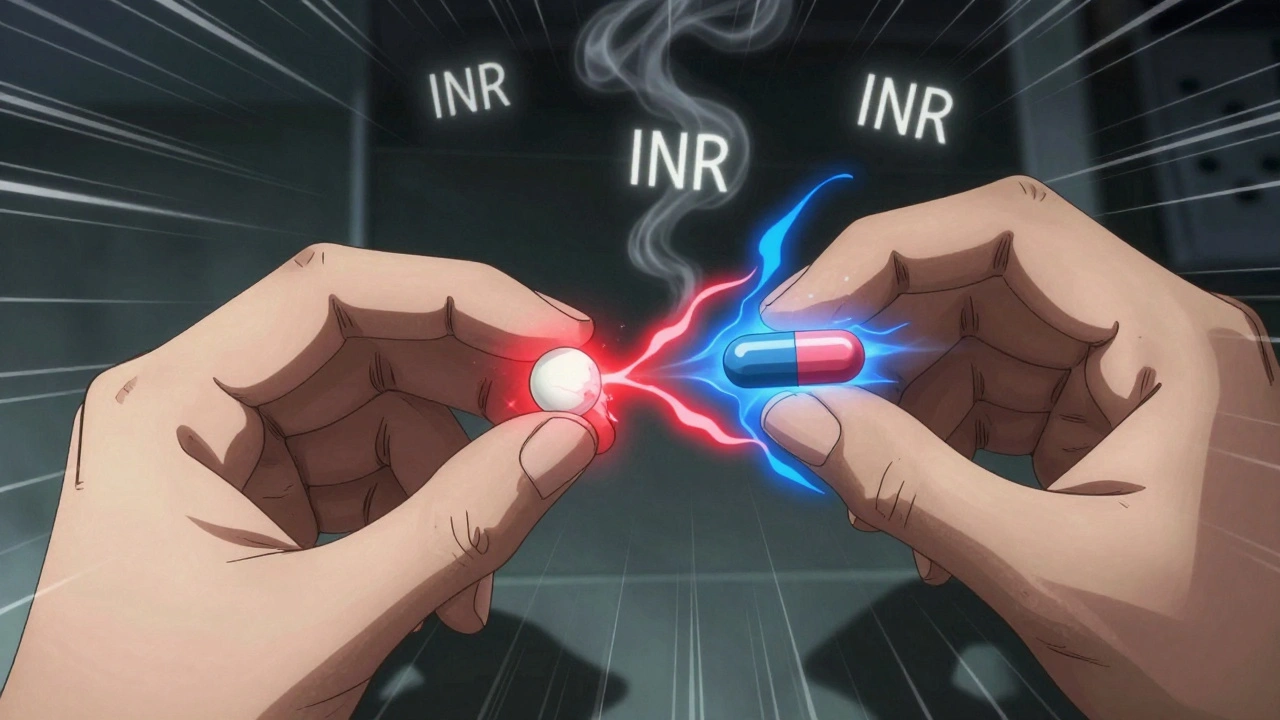Teleaudiology: How Remote Hearing Care and Device Adjustments Are Changing Hearing Health

For decades, getting your hearing aids adjusted meant driving to a clinic, waiting in a waiting room, and spending an hour or more for a simple tweak. Now, with teleaudiology, you can fix feedback, adjust volume, or fine-tune settings from your living room-no travel, no wait, no hassle. This isn’t science fiction. It’s happening right now, and it’s changing how millions of people manage their hearing health.
What Is Teleaudiology, Really?
Teleaudiology is the use of video calls, apps, and internet-connected devices to deliver audiology services remotely. That means hearing tests, follow-ups, and hearing aid adjustments can all happen over a smartphone or computer. It’s not just a backup option anymore-it’s a standard part of care for many patients.
Unlike general telemedicine, teleaudiology focuses specifically on hearing. It doesn’t replace everything an audiologist does in person-like checking for earwax blockages or examining the ear canal-but it handles the vast majority of routine care. Think of it like getting your car’s engine light checked via an app instead of driving to the shop. You still need an in-person visit if something’s physically broken, but most of the time, you just need a software update.
Major hearing aid brands like Phonak, ReSound, Oticon, and Starkey built their own tele-audiology platforms. These apps let you connect directly with your audiologist. You can send feedback about how your hearing aids are performing, get real-time adjustments, and even take hearing tests at home.
How It Works: Two Ways to Connect
There are two main ways teleaudiology works: asynchronous and synchronous.
Asynchronous means you do something on your own, and the audiologist responds later. For example, you might use a mobile app to take a hearing test in a quiet room. The app plays tones through headphones and records your responses. Your audiologist reviews the results the next day and sends you a new hearing aid setting via email or app notification.
Synchronous is live video. You hop on a Zoom-style call with your audiologist. They can guide you through tests in real time, adjust your hearing aids remotely, and answer questions instantly. Some systems, like hear.com’s Clinic-in-a-Box®, even let the audiologist control special testing equipment through your phone during the call.
Both methods require a few basic things: a smartphone or tablet, a stable internet connection (at least 5 Mbps), and Bluetooth-enabled hearing aids. Most modern prescription hearing aids from top brands support this. You don’t need fancy tech-just a device that can run an app and connect to Wi-Fi or cellular data.
Who Benefits the Most?
People in rural areas gain the most. A study in the International Journal of Audiology found that 78% of patients living more than 50 miles from an audiology clinic had never been able to get regular care before teleaudiology. Now, they’re getting the same level of service without the 2.3-hour drive.
Seniors with mobility issues also benefit hugely. One 72-year-old in Montana avoided four round-trip visits totaling 16 hours of travel time by resolving persistent feedback issues through three 15-minute remote sessions. For someone with arthritis, chronic pain, or limited transportation, that’s life-changing.
Even urban users appreciate the convenience. Instead of taking half a day off work to get a hearing aid tweak, you do it during lunch. No waiting room. No traffic. No stress.
Accuracy: Can Remote Tests Be Trusted?
Yes-when done right.
Studies show remote pure-tone hearing tests are 92-95% accurate compared to in-clinic tests, as long as the environment is quiet and the equipment is used correctly. That’s close enough for routine monitoring and adjustments.
But here’s the catch: if you’re testing in a noisy kitchen, with a weak internet connection, or using cheap headphones, accuracy drops to 78-85%. That’s why audiologists stress preparation. You need to:
- Use the headphones that came with your hearing aid app
- Test in a quiet room with no background noise
- Close windows and turn off TVs or fans
- Use a wired connection if Wi-Fi is spotty
Most users, even those over 65, get the hang of it after one 30-minute tutorial. A 2023 survey found 82% of seniors successfully complete remote tests after minimal help.

What Teleaudiology Can’t Do
It’s powerful-but not magic.
You can’t have your ears examined remotely. If you have earwax buildup, an infection, or sudden hearing loss, you still need to see an audiologist in person. One expert noted that skipping in-person exams carries a 12-15% risk of missing medically significant issues.
Also, if your hearing aid has a hardware problem-a broken microphone, a damaged receiver, or a faulty battery compartment-you can’t fix that over video. These cases require a physical visit.
And while 63% of U.S. audiology practices now offer tele-audiology, not all states allow audiologists to treat patients across state lines. As of 2024, 28 states still have licensing restrictions that block remote care from out-of-state providers.
Cost and Savings
Teleaudiology saves money in two ways: time and cash.
On average, an in-person hearing aid adjustment costs $140-$180. A remote session runs $120-$150. That’s a 15-20% savings per visit. Multiply that by four visits a year, and you’re saving $200-$300 annually.
But the bigger savings are hidden. The average patient used to spend $87 per appointment on gas, parking, and time off work. That’s gone. For people who rely on caregivers or ride-share services, that’s even more valuable.
Some manufacturers offer premium tele-audiology services with monthly subscriptions-like Phonak’s Remote Support at $29.99/month. These include unlimited adjustments, 24/7 tech support, and automatic environment detection. For frequent users, it’s worth it. For others, the free basic version works fine.
Real User Experiences
On Reddit’s r/Hearing subreddit, 87% of users who’ve tried teleaudiology say it improved their lives. One user wrote: “After my hip surgery, I couldn’t drive. My audiologist adjusted my hearing aids over Zoom. I didn’t miss a single appointment.”
Trustpilot reviews for major platforms average 4.3 out of 5 stars. The top positive comment? “I got my hearing aids tuned while I was at the grocery store. No waiting. No hassle.”
But there are frustrations too. In negative reviews, 29% cite poor internet connection, 24% say the apps are confusing, and 18% were disappointed when a problem turned out to be physical earwax.
One California user tried three remote troubleshooting sessions before discovering a wax blockage. That’s not a failure of teleaudiology-it’s a reminder that it’s part of a bigger system. The best care often blends remote and in-person visits.

Getting Started: Your First Steps
If you have Bluetooth-enabled hearing aids from a major brand, you’re already halfway there.
- Download your hearing aid manufacturer’s app (e.g., myPhonak, ReSound Smart, Oticon ON)
- Create a secure patient portal account using your audiologist’s code
- Connect your hearing aids to your phone via Bluetooth
- Book your first virtual appointment through the app or your provider’s website
The whole process takes 20-45 minutes for most people. After one 30-minute tutorial, 76% of users feel confident using the system on their own.
Common issues? Bluetooth pairing fails. Wi-Fi drops. Background noise messes with tests. Solutions? Use wired headphones. Switch to cellular data. Test in a closet or bathroom-those rooms are naturally quiet.
What’s Next for Teleaudiology?
The tech is getting smarter. Widex launched an AI feature in late 2023 that automatically detects if you’re in a restaurant, car, or noisy room-and adjusts your hearing aids without you lifting a finger. Signia added tele-audiology to over-the-counter (OTC) hearing aids in early 2024, opening the door to millions of new users.
The FDA’s April 2024 update expanded tele-audiology eligibility for OTC devices, which could bring remote care to 40 million Americans who previously had no access to professional support.
By 2027, analysts predict 55-60% of all hearing aid follow-ups will be done remotely. AI will handle 30-40% of routine adjustments automatically, freeing up audiologists to focus on complex cases.
The World Health Organization calls teleaudiology “critical” to solving the global shortage of 200,000 hearing professionals by 2030. It’s not just convenient-it’s necessary.
Hybrid Care Is the Future
The best approach isn’t remote or in-person. It’s both.
Start with a full in-person evaluation. Then, use teleaudiology for ongoing adjustments, troubleshooting, and check-ins. Most experts agree: 73% of complex cases still need at least one in-person visit per year.
But for the rest? Remote care is faster, cheaper, and just as effective. Patients report higher satisfaction with tele-audiology than in-person visits-4.6 out of 5 versus 4.2 out of 5-because they’re getting help when they need it, not when they can get an appointment.
Teleaudiology doesn’t replace the audiologist. It empowers them. And it empowers you.
Can I use teleaudiology if I don’t have a smartphone?
Most teleaudiology services require a smartphone or tablet with internet access and Bluetooth. If you don’t have one, you can still use teleaudiology through a computer with a webcam and speakers. Some providers offer phone-based support for simple adjustments, but full remote testing and programming require a compatible device. If you’re unsure, ask your audiologist-they may have loaner devices or can guide you through alternatives.
Are teleaudiology services covered by insurance or Medicare?
Medicare currently covers teleaudiology services in only 18 U.S. states, and only for certain types of care. Private insurance coverage varies widely-some plans cover remote visits fully, others don’t cover them at all. Always check with your provider before scheduling. Many hearing aid manufacturers include basic tele-audiology support as part of the device warranty, so you may not need insurance for routine adjustments.
What if my hearing aid stops working during a remote session?
Your audiologist can check the device’s status remotely and reprogram it if the issue is software-related-like volume settings or noise reduction. If it’s a hardware problem (e.g., no sound, distorted audio, dead battery), they’ll advise you to replace the battery, clean the device, or schedule an in-person visit. Most manufacturers offer free replacements for faulty parts within the warranty period.
Is teleaudiology safe and private?
Yes. Reputable platforms use encrypted video calls and secure patient portals that meet HIPAA standards. Your hearing data, medical records, and video sessions are protected. Avoid using public apps like regular Zoom or FaceTime-always use your audiologist’s official app or portal. If your provider doesn’t mention security, ask them what system they use.
Can I try teleaudiology if I’ve never used an app before?
Absolutely. Most users over 65 adapt quickly with a little help. Your audiologist will walk you through the app step by step, often during your first video call. Many offer free tutorials or printed guides. Start with simple tasks like adjusting volume, then move to remote testing. Don’t rush-take notes, ask questions, and practice. You don’t need to be tech-savvy-you just need to be willing to try.






Comments
Esperanza Decor
November 13, 2025 AT 09:05My grandma started using teleaudiology last year after her hip replacement, and it completely changed her life. She used to skip appointments because the drive was too much, but now she does adjustments while sipping tea. No more waiting rooms, no more exhaustion. She says her hearing aids feel more 'alive' now because she actually uses them regularly instead of just tolerating them.
It’s not perfect-sometimes the app glitches, and she still needs an in-person visit every six months for ear checks-but the convenience is worth it. I wish more people knew this was an option. It’s not just for techies; it’s for anyone who just wants to hear clearly without the hassle.
Deepa Lakshminarasimhan
November 14, 2025 AT 00:27They say it’s 'revolutionary' but I’ve seen this movie before. Every new 'breakthrough' in healthcare turns out to be a data harvesting scheme disguised as convenience. Your hearing aid app is probably tracking your location, your voice patterns, your listening habits-and selling it to insurers or advertisers.
And don’t get me started on how they 'optimize' settings remotely. What if they push a bad update? What if your device starts filtering out certain voices? What if your insurance company gets access to your hearing data and decides you're 'not a good candidate' for future coverage? This isn’t progress. It’s surveillance with a hearing aid.
Erica Cruz
November 15, 2025 AT 02:29Let’s be real-this is just a cost-cutting measure dressed up as innovation. Audiologists are being replaced by algorithms and apps because corporations don’t want to pay for licensed professionals. The '92-95% accuracy' stat? That’s only true under lab conditions. Real people test in noisy kitchens, with cheap earbuds, and then blame the tech when it doesn’t work.
And the subscription model? Classic. Now you’re paying $30/month to fix what should’ve been covered under warranty. This isn’t healthcare-it’s a SaaS product with ear molds.
Johnson Abraham
November 16, 2025 AT 01:11bro i tried this and it was a disaster. my hearing aids kept cutting out mid-call. i was on zoom with my audiologist and all i heard was 'brrrrrrt' for 10 mins. then she said 'try restarting your phone' like i’m 12. i just went to the clinic next day and they fixed it in 5 mins. why do they make this so hard? also my wifi sucks and i live in a city. this tech is for rich people with fiber.
also why do i need an app for volume? my old aids had a dial. simple. good.
Shante Ajadeen
November 17, 2025 AT 07:05I love how this is making hearing care feel less intimidating. My mom was terrified of tech, but her audiologist walked her through the app on a video call-step by step, no rush. Now she adjusts her own settings when she’s in a noisy restaurant. She even told me she feels more in control.
It’s not magic, but it’s kind. The fact that people in rural areas can finally get help without driving three hours? That’s huge. And yeah, it’s not perfect, but it’s way better than nothing. Keep pushing for this. It matters.
dace yates
November 17, 2025 AT 12:33I’m curious-how do they ensure the calibration of headphones used in remote tests is accurate? Different phones, different headphones, even different Bluetooth versions could skew results. Is there a standardized way to verify the audio output before the test starts? I’ve seen studies on accuracy, but not on the reliability of the input hardware. This feels like the weak link.
Danae Miley
November 18, 2025 AT 03:02The claim that '82% of seniors successfully complete remote tests after minimal help' is misleading. That statistic ignores attrition-how many seniors tried and gave up? How many were left stranded after a failed session? And where’s the data on cognitive load? For someone with hearing loss, navigating a confusing app while trying to follow audio instructions is exhausting, not empowering. The narrative is too rosy. The real success metric is sustained usage, not one-time completion.
Charles Lewis
November 19, 2025 AT 17:37While the convenience of teleaudiology is undeniable, we must not overlook the human dimension of care. Hearing is not merely a mechanical function-it is deeply tied to identity, social connection, and emotional well-being. The presence of a skilled audiologist, the tone of their voice, the reassurance in their eyes during a video call-these are not ancillary; they are integral to therapeutic success.
Technology should augment, not replace, this relational component. A well-designed teleaudiology platform doesn’t just transmit data-it transmits empathy. The best systems include not only remote adjustment tools but also guided reflection prompts, progress tracking with narrative input, and scheduled check-ins that prioritize listening over troubleshooting.
As we move forward, let us not confuse efficiency with care. The goal is not to minimize interaction, but to maximize its quality-wherever it occurs.
Renee Ruth
November 21, 2025 AT 13:43Wait-so now they’re pushing this on elderly people who can barely use a phone, and calling it 'empowerment'? And when the app fails, it’s their fault for not using the right headphones? And when they miss a serious diagnosis because they relied on a remote test? Who gets sued?
This is a disaster waiting to happen. I’ve seen it before with telehealth for mental health-people in crisis get automated responses. Now it’s happening to people who literally can’t hear the alarm clock. This isn’t innovation. It’s negligence wrapped in a tech brochure.
Samantha Wade
November 21, 2025 AT 16:24This is one of the most significant advancements in hearing healthcare in the last 50 years. It’s not just about convenience-it’s about equity. People in underserved communities, veterans in rural areas, disabled individuals, and low-income families who can’t afford transportation are finally being included in standard care.
Yes, there are challenges: connectivity, app design, insurance coverage. But those are solvable problems, not reasons to reject progress. The fact that 87% of users on r/hearing report improved quality of life? That’s not anecdotal-it’s a movement.
We need more funding, better regulation, and wider insurance coverage-not skepticism. This isn’t a gimmick. It’s a lifeline.
Elizabeth Buján
November 22, 2025 AT 20:46I think about this a lot-not just as a tech thing, but as a metaphor. We’re all trying to adjust our hearing in a noisy world. Some of us have fancy tools, some of us are stuck with broken ones. Teleaudiology doesn’t fix the noise-but it gives us a way to tune ourselves without having to leave the house.
Maybe that’s the real win. It’s not just about hearing better. It’s about feeling like you’re not broken just because you need help. Like you’re not a burden. Like you can still show up, even if you need a little software update to do it.
And isn’t that what we all want? To be heard, without having to beg for it?
Andrew Forthmuller
November 24, 2025 AT 15:01works. no issues. just use wired headphones and test in the bathroom. done.